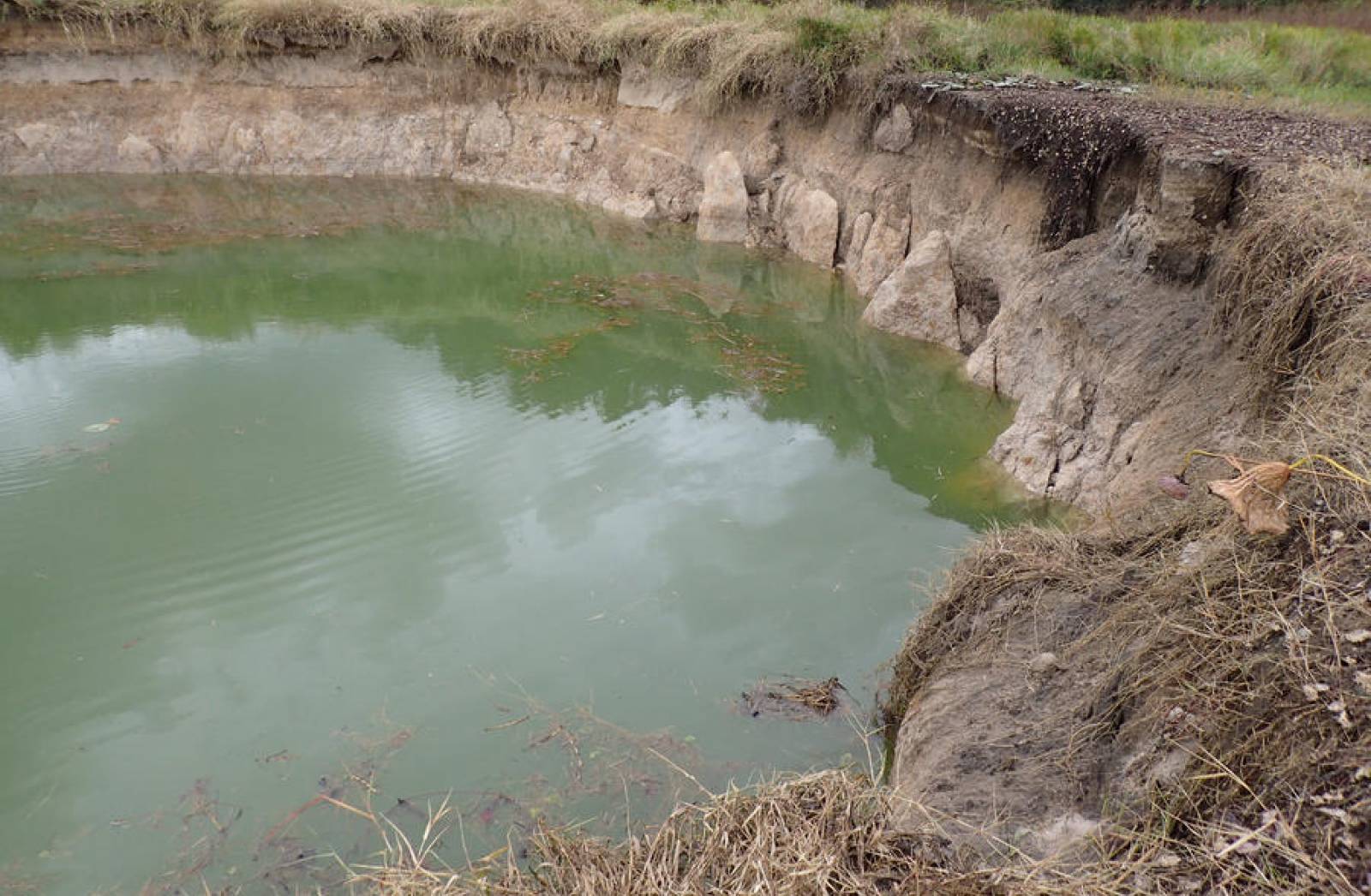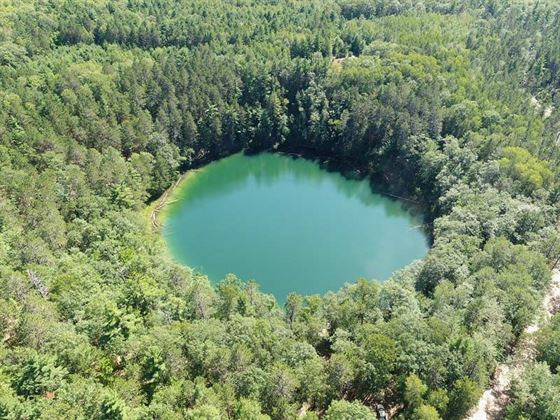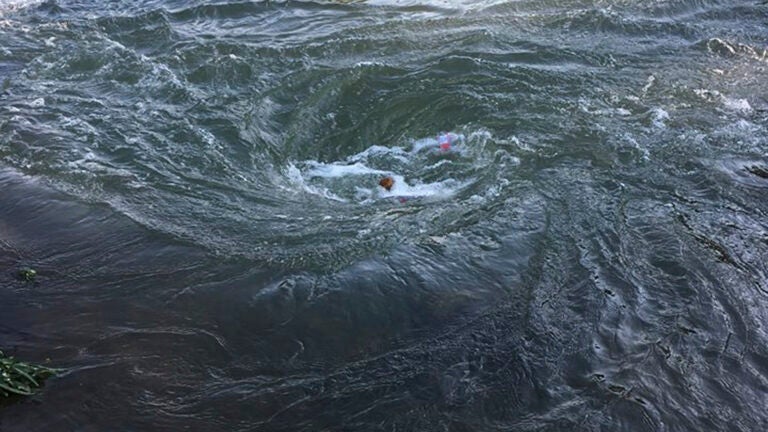Topic sinkholes in water: Discover the enigmatic world of water sinkholes, where nature"s hidden marvels and geological mysteries come alive beneath the surface.
Table of Content
- What are the potential impacts of sinkholes in water on water supplies and ecosystems?
- Formation of Sinkholes
- Impact on Water Bodies
- Prevention and Management
- Case Studies
- YOUTUBE: Sinkhole in Louisiana Swallows Trees - Caught on Tape 2013 - The New York Times
- Conclusion
- Overview of Sinkholes in Aquatic Environments
- Formation and Types of Sinkholes
- Impact of Sinkholes on Water Ecosystems
- Significance of Sinkholes in Environmental Studies
- Prevention and Management Strategies for Sinkholes
- Case Studies: Notable Sinkholes in Water Bodies Worldwide
- Future Research Directions in Sinkhole Studies
- FAQs: Common Questions About Water-Related Sinkholes
What are the potential impacts of sinkholes in water on water supplies and ecosystems?
When sinkholes form in water, they can have significant impacts on water supplies and ecosystems. Here are some potential impacts:
- Sinkholes can drain water from surface water bodies such as streams, lakes, and wetlands directly into the underground aquifers. This can lead to a decrease in surface water levels and can affect the availability of water for human consumption, agriculture, and ecosystems.
- The collapse of sinkholes can create direct conduits for contaminants from the surface to enter underground water sources. This can result in the contamination of water supplies, affecting both human health and the health of aquatic ecosystems.
- Changes in water flow patterns caused by sinkholes can disrupt the natural ecosystems that depend on stable water sources. This can lead to a loss of habitat for plants and animals, impacting biodiversity and ecosystem functioning.
- Sinkholes can also impact water quality by altering the chemistry of the water in underground aquifers. The sudden influx of surface water into aquifers can change the pH levels and nutrient concentrations, potentially leading to harmful algal blooms and other water quality issues.
READ MORE:
Formation of Sinkholes
Sinkholes primarily form in regions known as karst terrain, where soluble rock types like limestone, gypsum, or salt are present beneath the surface. Water plays a critical role in the formation of sinkholes by dissolving these soluble rocks, leading to the creation of underground voids. Over time, the land surface above these voids can collapse, forming a sinkhole.
Types of Sinkholes
- Cover-collapse Sinkhole: This type is the most dramatic and can occur suddenly, often resulting in significant changes to the landscape.
- Cover-subsidence Sinkhole: These sinkholes form gradually and are less noticeable but can still pose risks to structures and water bodies.
- Solution Sinkhole: Formed solely by the dissolution of rock, these sinkholes are more common in areas with a high concentration of soluble rocks.
:max_bytes(150000):strip_icc()/__opt__aboutcom__coeus__resources__content_migration__mnn__images__2019__03__CenoteIkKilStairwellSwimmingHole-d99e791c5c2242f680c5b143c04fd056.jpg)
Impact on Water Bodies
When sinkholes form in or near water bodies, they can dramatically alter the hydrology of the area. They can create new waterways, divert water from lakes or rivers, and even lead to the formation of new springs. In coastal areas, sinkholes can lead to the mixing of freshwater with saltwater, affecting local ecosystems.
Prevention and Management
While it is challenging to prevent the natural formation of sinkholes, understanding the underlying geology and monitoring water usage can help manage their impact. In urban areas, infrastructure planning and construction must consider the potential for sinkhole formation to mitigate risks to buildings and water supply systems.

Case Studies
| Location | Type | Impact on Water Body |
| Dead Sea, Middle East | Cover-collapse | Formation of new sinkholes due to freshwater intrusion and sea-level drop |
| Xuan"en County, China | Solution Sinkhole | Creation of a pond within the sinkhole, becoming a unique ecosystem |
Sinkhole in Louisiana Swallows Trees - Caught on Tape 2013 - The New York Times
Disaster: \"Watch this captivating video showcasing human resilience and unity in the face of disaster. Witness the incredible stories of survival and triumph, highlighting the indomitable spirit of the human heart.\" Erosion: \"Discover the breathtaking beauty of nature\'s ever-changing landscapes in this mesmerizing video about erosion. Marvel at the power of water and wind sculpting the earth in stunning and artistic ways.\"
Sinkhole in Louisiana Swallows Trees - Caught on Tape 2013 - The New York Times
Disaster: \"Watch this captivating video showcasing human resilience and unity in the face of disaster. Witness the incredible stories of survival and triumph, highlighting the indomitable spirit of the human heart.\" Erosion: \"Discover the breathtaking beauty of nature\'s ever-changing landscapes in this mesmerizing video about erosion. Marvel at the power of water and wind sculpting the earth in stunning and artistic ways.\"
Conclusion
Sinkholes in water bodies are natural occurrences that can have significant impacts on the landscape and local ecosystems. By studying these phenomena, scientists and engineers can better understand and manage the risks associated with sinkholes in water-rich environments.

Overview of Sinkholes in Aquatic Environments
Sinkholes in aquatic environments present a unique interplay between water and geology, leading to the formation of these natural depressions. They are predominantly found in areas where the underlying bedrock is composed of soluble materials such as limestone, gypsum, or salt, which can be dissolved by the action of water.
- Sinkholes can vary significantly in size, from small ponds to large lakes, and can be either shallow or incredibly deep.
- They often form in regions known as karst terrains, where the dissolution of bedrock creates underground voids. Over time, the roof of these voids can collapse, leading to the formation of a sinkhole.
- Water plays a crucial role in the development of sinkholes, acting as both a solvent that dissolves the rock and as a physical force that can carry away the dissolved material, enlarging the cavities and eventually leading to collapse.
- In coastal areas, sinkholes may lead to the mixing of freshwater with saltwater, impacting local ecosystems and water quality.
The presence of sinkholes in water bodies can significantly affect the hydrology of an area, altering water flow patterns, creating new water features, and sometimes even draining lakes and rivers. Understanding the formation and characteristics of these geological features is crucial for managing their impact on the environment and human activities.
Formation and Types of Sinkholes
Sinkholes are natural depressions or holes that form in the Earth"s surface, primarily due to the dissolution of carbonate rocks like limestone, gypsum, or salt by water. This process can lead to the development of underground spaces and caverns. When the land above these voids can no longer support its own weight, it collapses, creating a sinkhole. This can happen suddenly, often with little to no warning, resulting in dramatic changes to the landscape.
- Solution Sinkholes: These form directly through the dissolution of rock at the ground surface, where acidic water reacts with the carbonate rock, leading to the gradual deepening and widening of the rock"s fractures and creating a depression.
- Cover-Subsidence Sinkholes: Occur where sediments above the dissolving rock are permeable and gradually infill the developing voids, creating a depression at the surface. These sinkholes form slowly and may not be immediately noticeable.
- Cover-Collapse Sinkholes: Characterized by the sudden collapse of the overlying sediments into the voids below, these sinkholes can cause significant damage and occur where the covering sediments contain a substantial amount of clay.
- Pseudokarst Sinkholes: Though resembling karst sinkholes, these are formed by processes other than the natural dissolution of rock, such as mining activities, water main breaks, or sewer collapses.
Human activities can also influence the formation of sinkholes, especially in areas where the natural water drainage patterns are altered, such as through the construction of buildings, roads, and other infrastructures. This can lead to an increased rate of sinkhole development, sometimes with catastrophic results.

Impact of Sinkholes on Water Ecosystems
Sinkholes have a significant impact on water ecosystems, particularly in regions underlain by soluble rocks like limestone. These geological formations are prone to dissolve when exposed to water, leading to the development of sinkholes that can drastically alter the landscape and water flow patterns. Sinkholes can capture surface and groundwater, redirecting water flows and potentially draining rivers or lakes. In some cases, sinkholes can lead to the formation of new water bodies, such as ponds or lakes, when they intercept the water table or surface water collects in the depression.
- Alteration of Water Flow: Sinkholes can disrupt the natural flow of water in an area, redirecting surface water and groundwater into new paths, which can impact surrounding ecosystems and water availability.
- Creation of New Aquatic Habitats: When sinkholes intercept the water table or collect rainwater, they can form new aquatic habitats that support a variety of plant and animal life, contributing to biodiversity.
- Impact on Water Quality: The formation of sinkholes can expose groundwater to contaminants from the surface, potentially affecting the quality of water available for ecosystems and human consumption.
- Risk to Aquatic Life: Sudden formation of sinkholes can pose a risk to aquatic life, particularly in instances where a sinkhole drains a lake or river, leaving aquatic species without their natural habitat.
Understanding the interaction between sinkholes and water ecosystems is crucial for managing these natural features and mitigating their impact on the environment and human activities.
Significance of Sinkholes in Environmental Studies
Sinkholes hold considerable significance in environmental studies due to their unique formation process and impact on landscapes and ecosystems. These natural phenomena occur when surface rock, often limestone, is dissolved by water, leading to the development of subterranean voids. Eventually, the land surface may collapse into these voids, creating sinkholes. This process is especially prevalent in areas known as karst terrains.
- Indicator of Subsurface Processes: Sinkholes serve as indicators of the complex processes occurring beneath the Earth"s surface, offering insights into groundwater flow patterns and the dissolution of soluble rocks.
- Groundwater Recharge: In some regions, sinkholes contribute to groundwater recharge, directing surface water into underground aquifers, which is crucial for maintaining water supplies in karst regions.
- Ecosystem Formation: Sinkholes can lead to the formation of unique ecosystems by creating isolated environments like cenotes, which are significant for biodiversity and have cultural and historical importance in places like the Yucatan Peninsula.
- Environmental and Geological Risk Assessment: Studying sinkholes helps in assessing geological risks, understanding land subsidence, and planning for urban development and water management to mitigate potential damage.
- Climate and Environmental Change Record: Sinkholes can act as natural archives, preserving records of past climate and environmental changes within their sediment fillings.
The study of sinkholes is interdisciplinary, intersecting with hydrology, geology, ecology, and environmental engineering, highlighting their importance in understanding and managing the Earth"s subsurface environment and water resources.

Prevention and Management Strategies for Sinkholes
Sinkholes, often dramatic in their occurrence, can cause significant damage, especially in areas underlain by limestone, carbonate rock, salt beds, or other rocks soluble by groundwater. Understanding the underlying geological and hydrological processes is crucial for effective prevention and management of sinkholes.
- Geological and Hydrological Understanding: Identifying areas prone to sinkhole formation, particularly those with soluble rocks like limestone and carbonate, is essential for early prevention and mitigation strategies.
- Regular Monitoring: Monitoring changes in the land surface and subsurface water levels can help in early detection of potential sinkhole development, allowing for timely interventions.
- Water Management: Proper management of surface water and groundwater is vital to prevent sinkholes. This includes controlling water leakage from pipes, maintaining drainage systems, and careful planning of water extraction and irrigation activities.
- Construction and Development Practices: Adapting construction and land-use practices to minimize alterations in natural water drainage patterns and avoid placing excessive loads on susceptible ground can reduce sinkhole formation risk.
- Public Awareness and Planning: Educating the public and integrating sinkhole risk assessments into urban planning and development can significantly reduce the impacts of sinkholes in vulnerable regions.
Effective management strategies involve a combination of geological understanding, careful water management, responsible construction practices, and public awareness to mitigate the risks associated with sinkholes.
Case Studies: Notable Sinkholes in Water Bodies Worldwide
Sinkholes, formed by the dissolution of surface rock such as limestone, create fascinating and sometimes dangerous features in the landscape. These geological formations can lead to the development of unique ecosystems and have significant impacts on local environments.
- Daisetta Sinkhole, Texas, USA: This sinkhole emerged suddenly in 2008, expanding rapidly to a diameter of 200 meters (656 feet) and a depth of 75 meters (246 feet). Within weeks, it accumulated water to form a 23-meter (7-foot) deep lake, even housing a 2-meter (7-foot) alligator.
- Minyé Sinkhole, Papua New Guinea: Notable for its immense size and the visible underground river flowing across its bottom, the Minyé sinkhole presents a dramatic example of sinkhole formation in limestone terrains.
- Cedar Sink, Mammoth Cave National Park, Kentucky, USA: This sinkhole is part of the extensive Mammoth Cave system, featuring an underground stream that adds to its allure and ecological significance.
These case studies underscore the diverse origins and impacts of sinkholes, from those precipitated by natural geological processes to those induced by human activities, such as construction and water management practices. Understanding these phenomena is crucial for mitigating risks and preserving the unique ecosystems they create.
:max_bytes(150000):strip_icc()/LEAD-25688ccbf0af493d8203e0c6580a9902.jpg)
Future Research Directions in Sinkhole Studies
As sinkholes continue to pose significant challenges globally, future research in this field is pivotal for enhancing our understanding and management of these geological phenomena. Key areas of focus include:
- Enhanced Prediction Models: Developing more sophisticated models to predict sinkhole occurrences, integrating geological, hydrological, and environmental data to anticipate sinkholes before they happen.
- Impact of Climate Change: Examining the effects of extreme weather events, such as droughts and floods, on the formation and expansion of sinkholes, especially in vulnerable regions.
- Urban Development and Land Use: Investigating the influence of human activities, including construction, mining, and water extraction, on sinkhole development, aiming to propose sustainable practices that minimize risks.
- Advanced Monitoring Techniques: Utilizing modern technology such as satellite imagery, drones, and ground-penetrating radar for early detection of subsurface anomalies indicative of potential sinkholes.
- Ecosystems and Biodiversity: Studying the ecological impacts of sinkholes, especially those that form water bodies, to understand their role in local ecosystems and biodiversity conservation.
By focusing on these areas, researchers can contribute to safer urban planning, more effective sinkhole mitigation strategies, and a deeper understanding of the complex interactions between geological processes and human activities.
READ MORE:
FAQs: Common Questions About Water-Related Sinkholes
- What causes water-related sinkholes?
- Sinkholes are typically formed when water dissolves underlying soluble rocks such as limestone, leading to the creation of underground cavities. The collapse of these cavities forms sinkholes, which can be exacerbated by factors like heavy rainfall, changes in groundwater levels, and human activities such as construction and groundwater pumping.
- Can sinkholes be predicted?
- While predicting the exact time and location of a sinkhole formation is challenging, areas susceptible to sinkholes can often be identified based on geological conditions. Regular monitoring and geological surveys can help identify potential risks, but sudden collapses can still occur without much warning.
- Are there different types of sinkholes?
- Yes, there are several types of sinkholes, including solution sinkholes, cover-subsidence sinkholes, and cover-collapse sinkholes. Solution sinkholes form directly in soluble rock, cover-subsidence sinkholes occur gradually where sediments fill voids in the underlying rock, and cover-collapse sinkholes can happen abruptly, leading to significant damage.
- How can sinkholes affect water bodies?
- Sinkholes can capture surface water, leading to the formation of new ponds or lakes, or they can drain existing water bodies by creating a path for water to flow into underground aquifers or cavities.
- What measures can be taken to mitigate sinkhole risks?
- Understanding local geology, regulating water usage, careful planning and construction practices, and monitoring changes in land and groundwater levels are crucial steps in mitigating the risks associated with sinkholes.
- Are sinkholes related to human activities?
- Yes, human activities such as over-extraction of groundwater, construction, and alteration of natural water drainage systems can trigger or exacerbate the formation of sinkholes.
For more detailed information on sinkholes, including their causes, types, and impacts, visit educational and geological resources like the U.S. Geological Survey and National Geographic.
Explore the mysterious world of water-related sinkholes, where nature"s power and beauty converge to shape our landscapes in unexpected ways. Dive into this fascinating journey with us!









